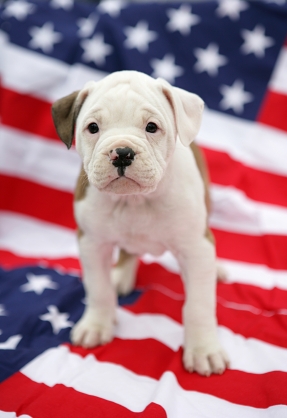For Signs of Heat Stroke, What to do and How to Prevent: Click This Link
Car Safety for Dogs 
Today most people would never think of traveling in their car without a seat belt for themselves or safety seats/restraints for their children but have no problem letting their dog travel loose in the car. We have all seen the dog in the back of a pick up traveling down the highway at 65 MPH or more, as well as the dog with his head hanging out the window of the family car. Both of these scenes appeal to our sense of romanticized freedom and pure canine joy. Unfortunately they are very dangerous practices for the dog, the driver and the rest of the motoring public. It has happened more than once that a dog has jumped or been ejected from a moving vehicle and landed right in the middle of the freeway, with tragic results.
In California is it unlawful to have a loose dog traveling in an uncovered pickup bed. V C Section 23117 Carrying Animal in Motor TruckCA DMV
"Carrying Animal in Motor Truck 23117. (a) No person driving a motor vehicle shall transport any animal in the back of the vehicle in a space intended for any load on the vehicle on a highway unless the space is enclosed or has side and tail racks to a height of at least 46 inches extending vertically from the floor, the vehicle has installed means of preventing the animal from being discharged, or the animal is cross tethered to the vehicle, or is protected by a secured container or cage, in a manner which will prevent the animal from being thrown, falling, or jumping from the vehicle."
For the owners who insist on having their dog in the back of the truck, the dog should be tethered on a chew proof line short enough that the dog cannot jump over the side or get any part of their body over the side. A dog tethered on a line which is too long can get some or all of its body over the edge of the truck causing strangulation.
For Complete Article, Click On This Link
Taking a Road Trip with Your Dog
I have had many memorable road trips with my dogs. I have driven 1000's of miles with my pack of three traveling to Dog Camps, Agility Trials, and to my property in Idaho. These trips have a special place in my memory and the experiences will always make me smile. But taking your dog(s) on a road trip takes special planning and preparation so that you and your dog(s) are safe and happy.
Plan ahead by making a list of all the items you will need well in advance so that you can relax and have fun with your dog(s). Before leaving make sure that your dog(s) will be welcome at your destination(s). Find pet friendly motels and camping grounds on-line before hand and make reservations. www.dogfriendly.com/ Make sure your dog is welcome if you are going to a friend's house. If you plan on going to a lot of places that your dog will not be allowed such as amusement parks, national monuments, museums then don't bring Rover. Make plans to have him properly taken care of by friends or family or professionally by a pet sitter or kennel.
A crate is the safest way to travel with your dog. It also can be used at your destination to make your dog feel safe and comfortable. Other options are using a dog barrier that separates the dog from you and allows some freedom but keeps them from flying forward if you have an accident. There are car seats for small dogs and seat belt harnesses if you don't have a crate or barrier. For more info on car safety for dogs go to Car Safety for Dogs.
Make sure you have proper ID tags and Microchip your dog. A cell phone on the tag is best so that you can be contacted while traveling. You can also use temporary tags written in waterproof pen and changed with each new location you travel to.
For Complete Article, Click on This Link
Keep Your Dog Safe on The 4th of July 
Every year on the 4th of July animal shelters around the country see a huge upsurge of lost pets. There are more lost dogs on the 4th of July than any other time of the year.
Dogs have very sensitive hearing and it has been estimated to be 10 times greater than our hearing. Loud explosions, bright flashing lights, screeching Roman candles, sirens, and sparklers can easily frighten a dog and lead to his wanting to flee or escape.
Fear of loud noises in dogs can develop after one frightening event or can develop slowly over time and then appear without warning. Dogs that are afraid of loud noises and develop phobias have never learned to tolerate the fear of the provoking stimuli and it usually gets worse over time with each subsequent event.
So even if your dog has never shown any fear of fireworks you should still take precautions on this 4th of July.
For Recommendations on How to Prepare Your Dog, Click This Link
I hope you and your dog(s) have an enjoyable and safe Summer.